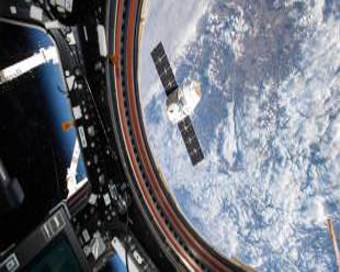 PM Modi visit USA
PM Modi visit USA Only the mirror in my washroom and phone gallery see the crazy me : Sara Khan
Only the mirror in my washroom and phone gallery see the crazy me : Sara Khan Karnataka rain fury: Photos of flooded streets, uprooted trees
Karnataka rain fury: Photos of flooded streets, uprooted trees Cannes 2022: Deepika Padukone stuns at the French Riviera in Sabyasachi outfit
Cannes 2022: Deepika Padukone stuns at the French Riviera in Sabyasachi outfit Ranbir Kapoor And Alia Bhatt's Wedding Pics - Sealed With A Kiss
Ranbir Kapoor And Alia Bhatt's Wedding Pics - Sealed With A Kiss Oscars 2022: Every Academy Award Winner
Oscars 2022: Every Academy Award Winner Shane Warne (1969-2022): Australian cricket legend's life in pictures
Shane Warne (1969-2022): Australian cricket legend's life in pictures Photos: What Russia's invasion of Ukraine looks like on the ground
Photos: What Russia's invasion of Ukraine looks like on the ground Lata Mangeshkar (1929-2022): A pictorial tribute to the 'Nightingale of India'
Lata Mangeshkar (1929-2022): A pictorial tribute to the 'Nightingale of India' PM Modi unveils 216-feet tall Statue of Equality in Hyderabad (PHOTOS)
PM Modi unveils 216-feet tall Statue of Equality in Hyderabad (PHOTOS)India Open Competition in Shotgun, organised by the National Rifle Association of India (N
- Hockey India names Amir Ali-led 20-man team for Junior Asia Cup
- Harmanpreet Singh named FIH Player of the Year, PR Sreejesh gets best goalkeeper award
- World Boxing medallist Gaurav Bidhuri to flag off 'Delhi Against Drugs' movement on Nov 17
- U23 World Wrestling Championship: Chirag Chikkara wins gold as India end campaign with nine medals
- FIFA president Infantino confirms at least 9 African teams for the 2026 World Cup
New NASA research casts doubt on Proxima b habitability Last Updated : 09 Feb 2017 02:01:53 PM IST 
(file photo) A recently discovered Earth-sized planet, dubbed Proxima b, which orbits within the "habitable zone" of the red dwarf Proxima Centauri, may not actually harbour life, new NASA research suggests.
The search for life beyond Earth starts in habitable zones, the regions around stars where conditions could potentially allow liquid water -- which is essential for life as we know it -- to pool on a planet's surface.
And the discovery of Proxima b raised hope of finding life beyond our home planet.
But some of these zones might not actually be able to support life due to frequent stellar eruptions from young red dwarf stars which can threaten an exoplanet's atmosphere with oxygen loss , said the study published in the journal The Astrophysical Journal Letters.
It is quite unlikely Proxima b is habitable, the scientists concluded.
"If we want to find an exoplanet that can develop and sustain life, we must figure out which stars make the best parents," said Vladimir Airapetian, lead author of the paper and a solar scientist at NASA's Goddard Space Flight Center in Greenbelt, Maryland.
"We're coming closer to understanding what kind of parent stars we need," Airapetian noted.
The team of NASA scientists wanted to expand how habitable zones are defined, taking into account the impact of stellar activity.
To determine a star's habitable zone, scientists have traditionally considered how much heat and light the star emits.
Stars more massive than our sun produce more heat and light, so the habitable zone must be farther out. Smaller, cooler stars yield close-in habitable zones.
But along with heat and visible light, stars emit X-ray and ultraviolet radiation, and produce stellar eruptions such as flares and coronal mass ejections -- collectively called space weather.
One possible effect of this radiation is atmospheric erosion, in which high-energy particles drag atmospheric molecules -- such as hydrogen and oxygen, the two ingredients for water out into space.
Airapetian and his team's new model for habitable zones now takes this effect into account.
Another important habitability factor is a star's age, said the scientists, based on observations they have gathered from NASA's Kepler mission.
Considering the host star's age and the planet's proximity to its host star, the scientists expect that Proxima b is subjected to torrents of X-ray and extreme ultraviolet radiation from superflares occurring roughly every two hours.
They estimated oxygen would escape Proxima b's atmosphere in 10 million years.
Additionally, intense magnetic activity and stellar wind -- the continuous flow of charged particles from a star -- would exacerbate already harsh space weather conditions, the study said.
For Latest Updates Please-
Join us on
Follow us on








172.31.16.186







